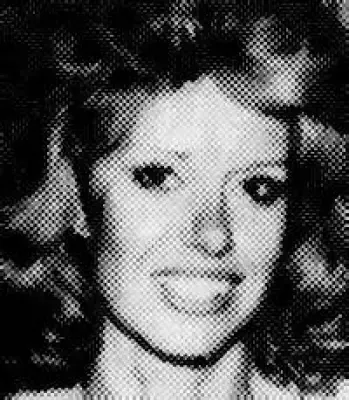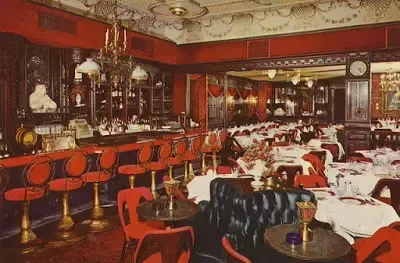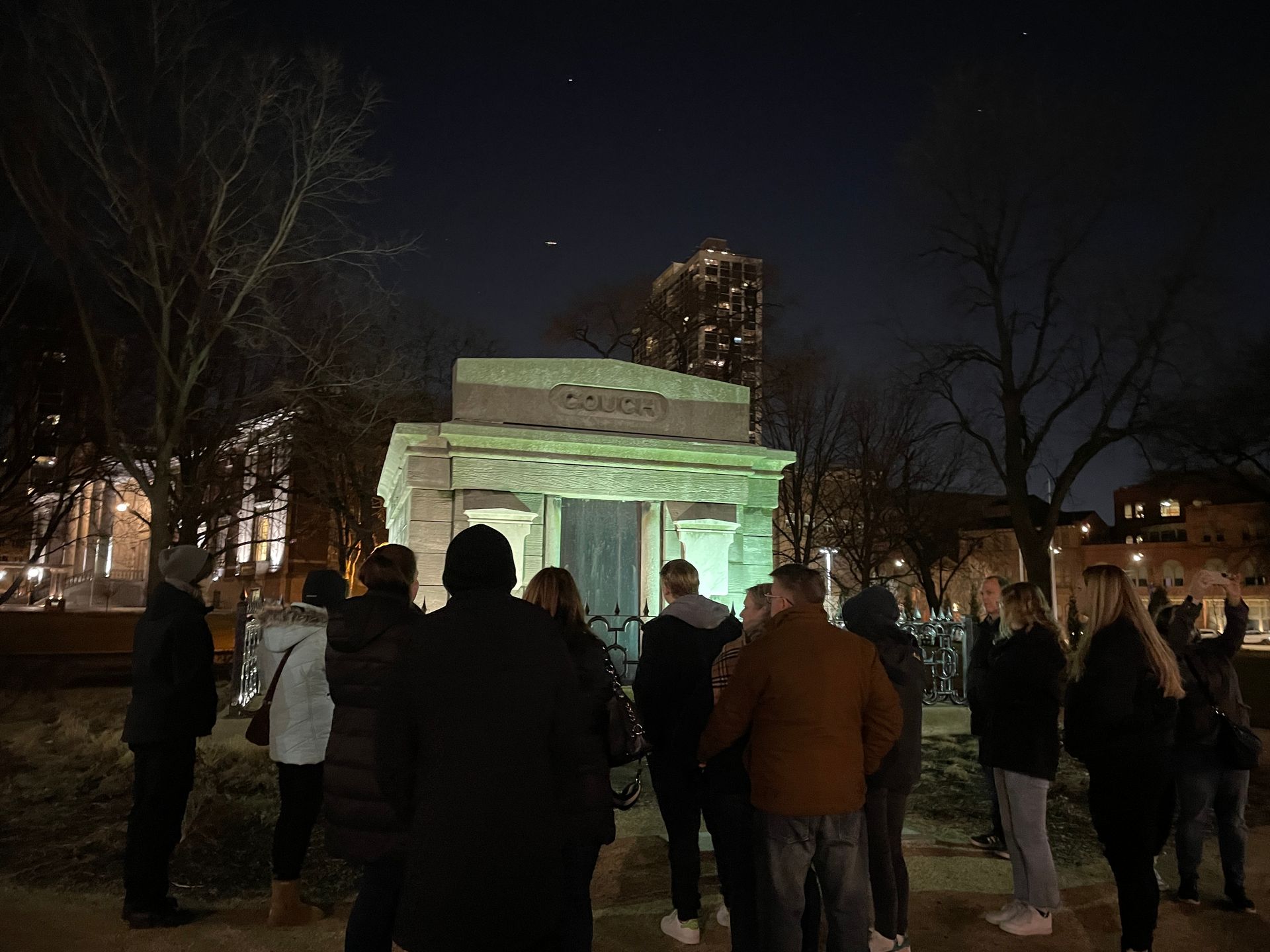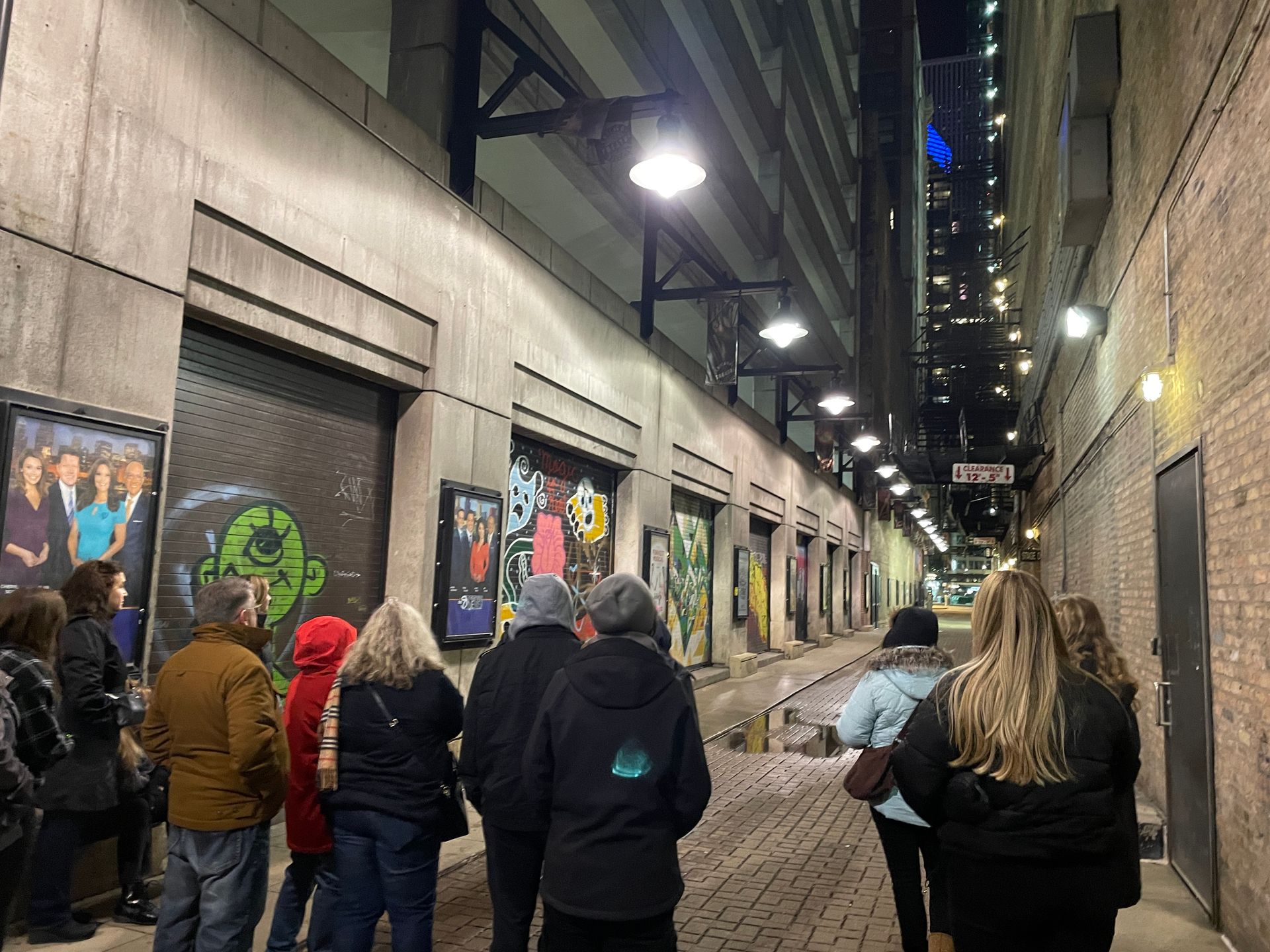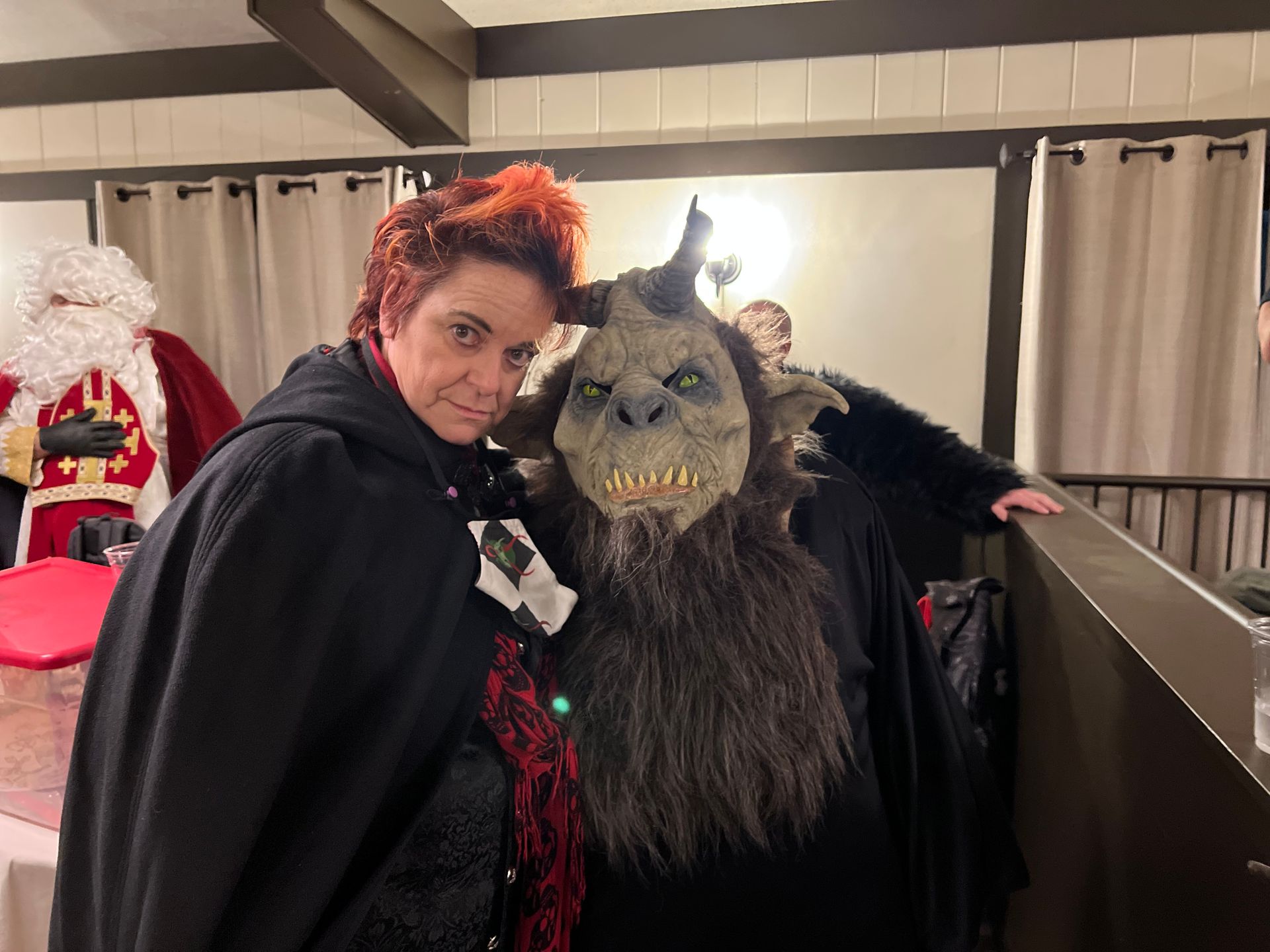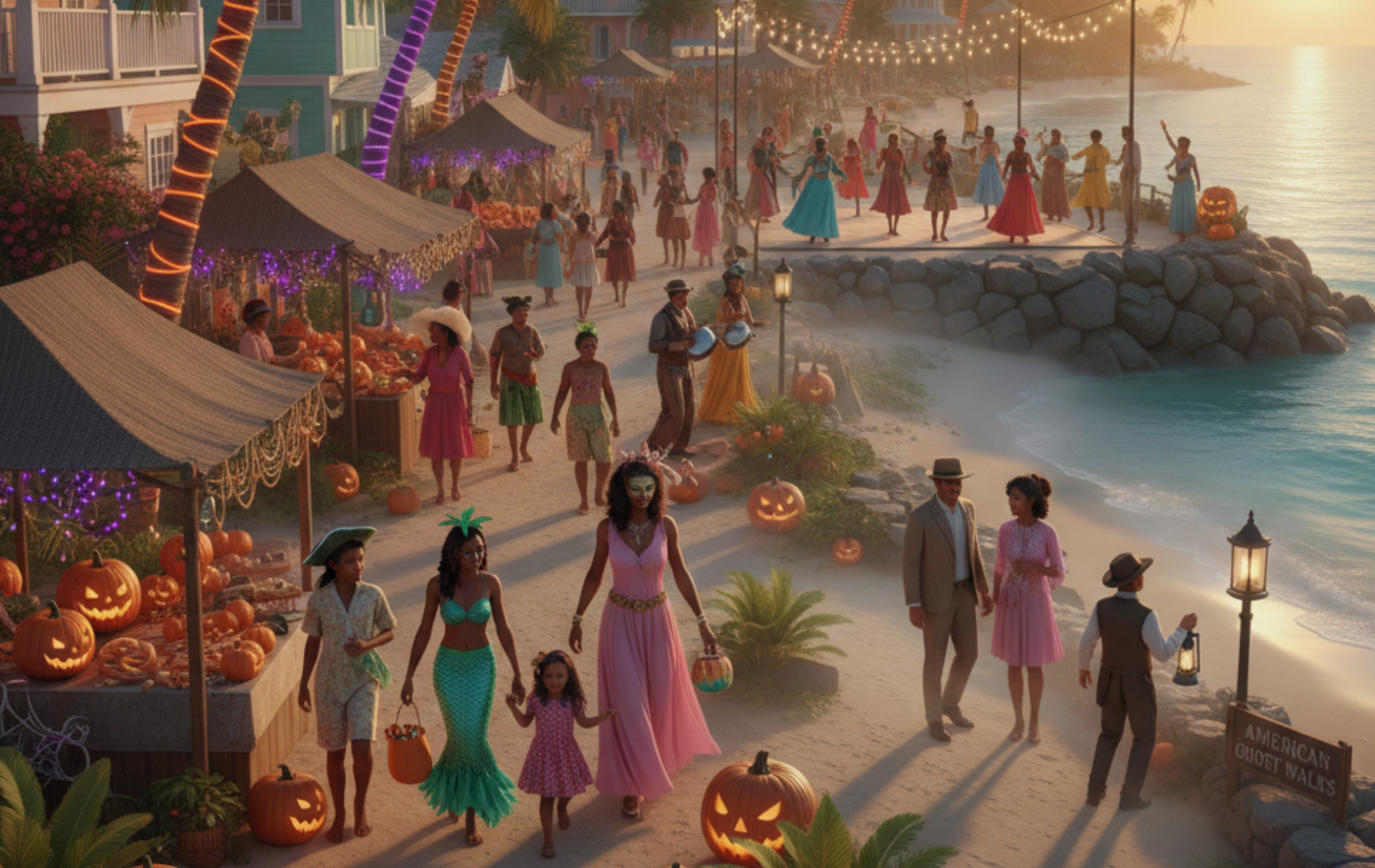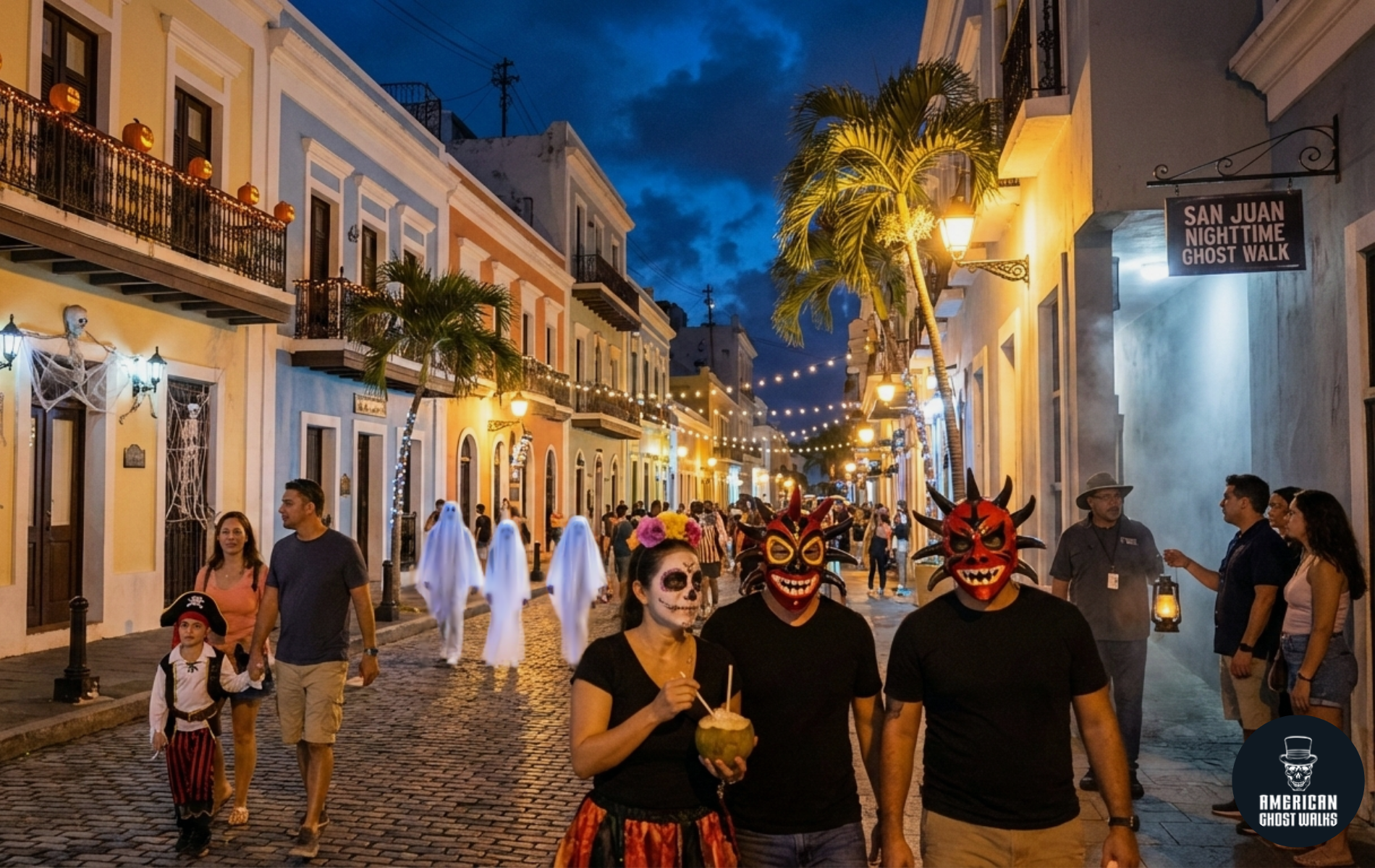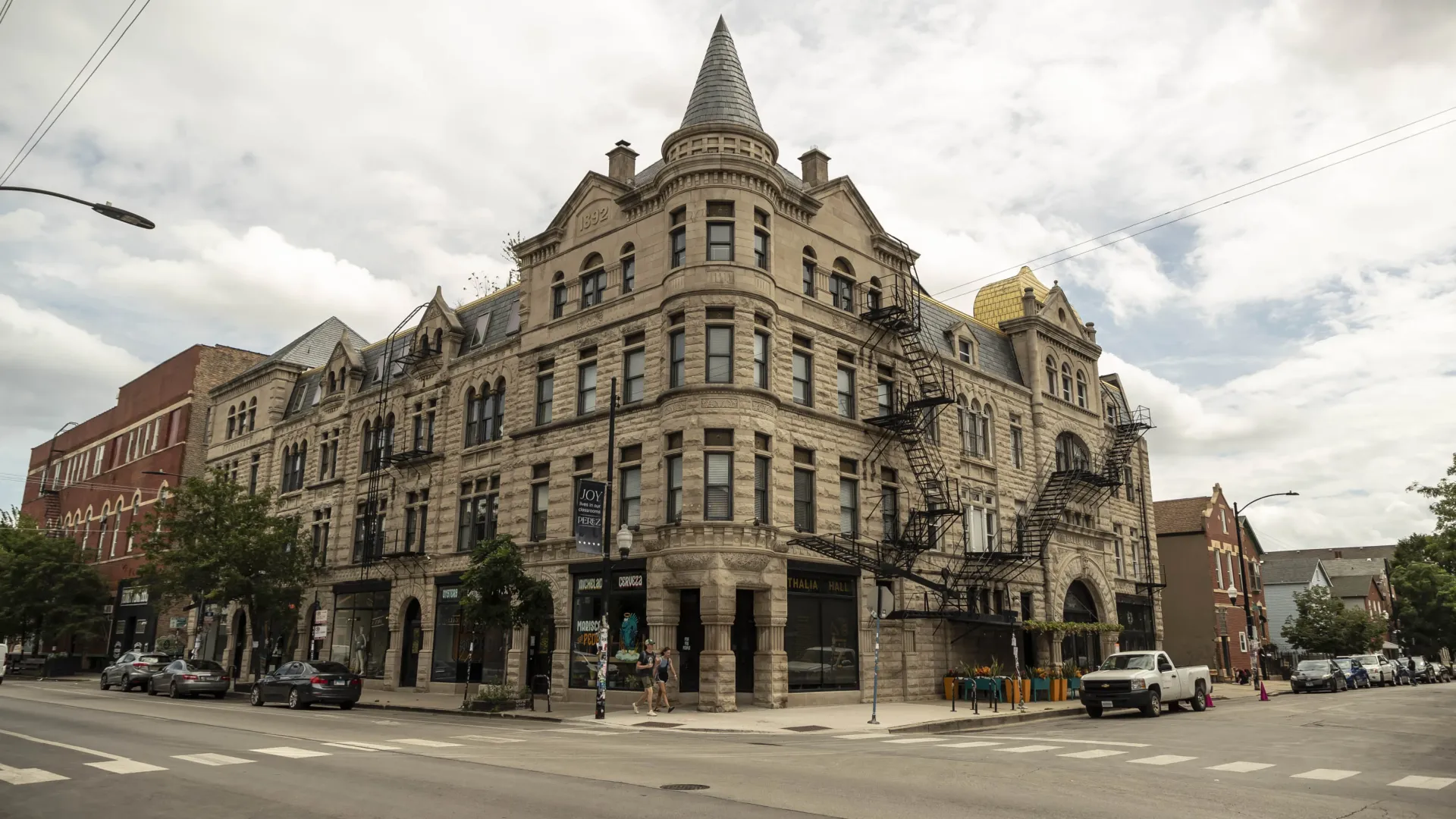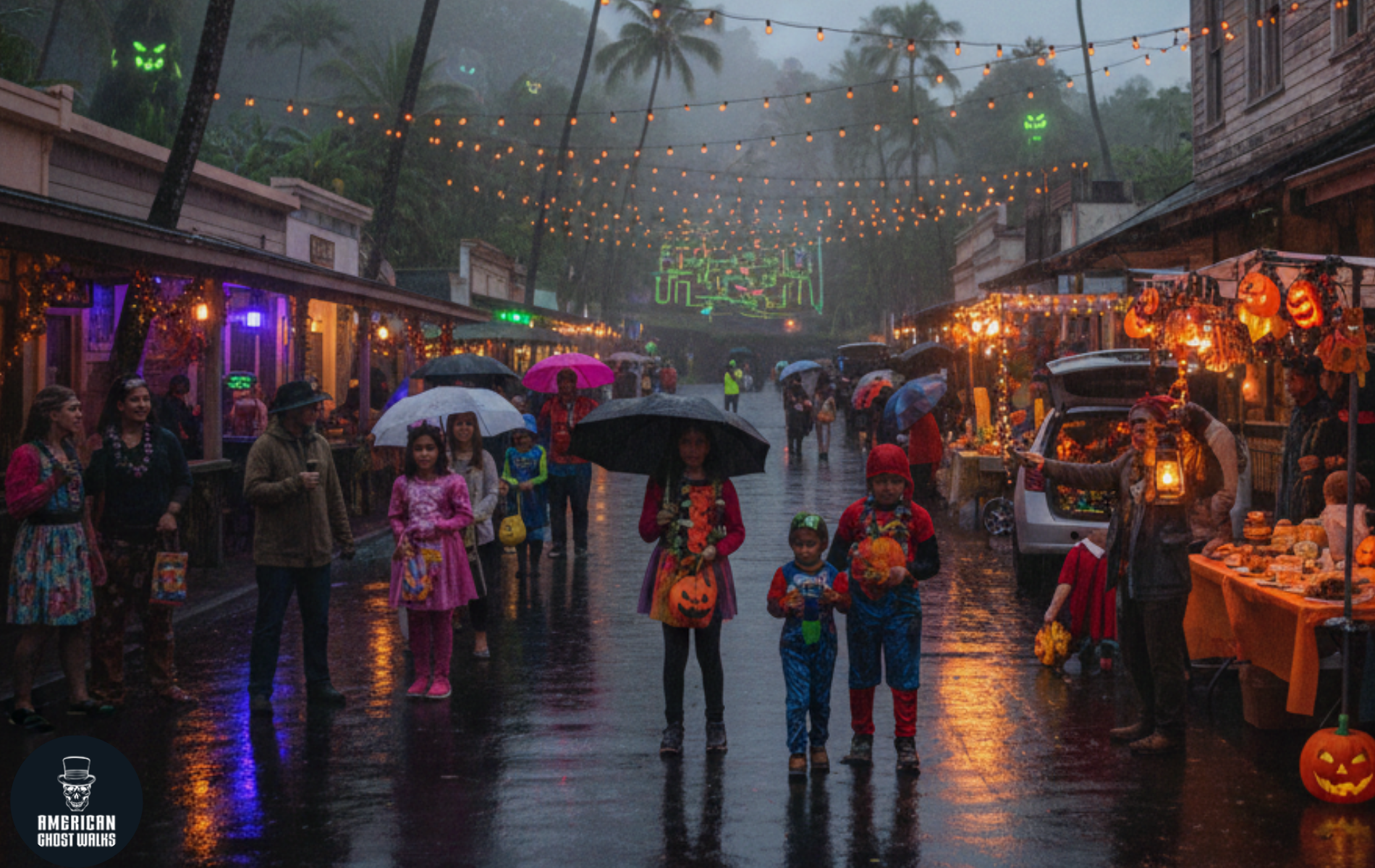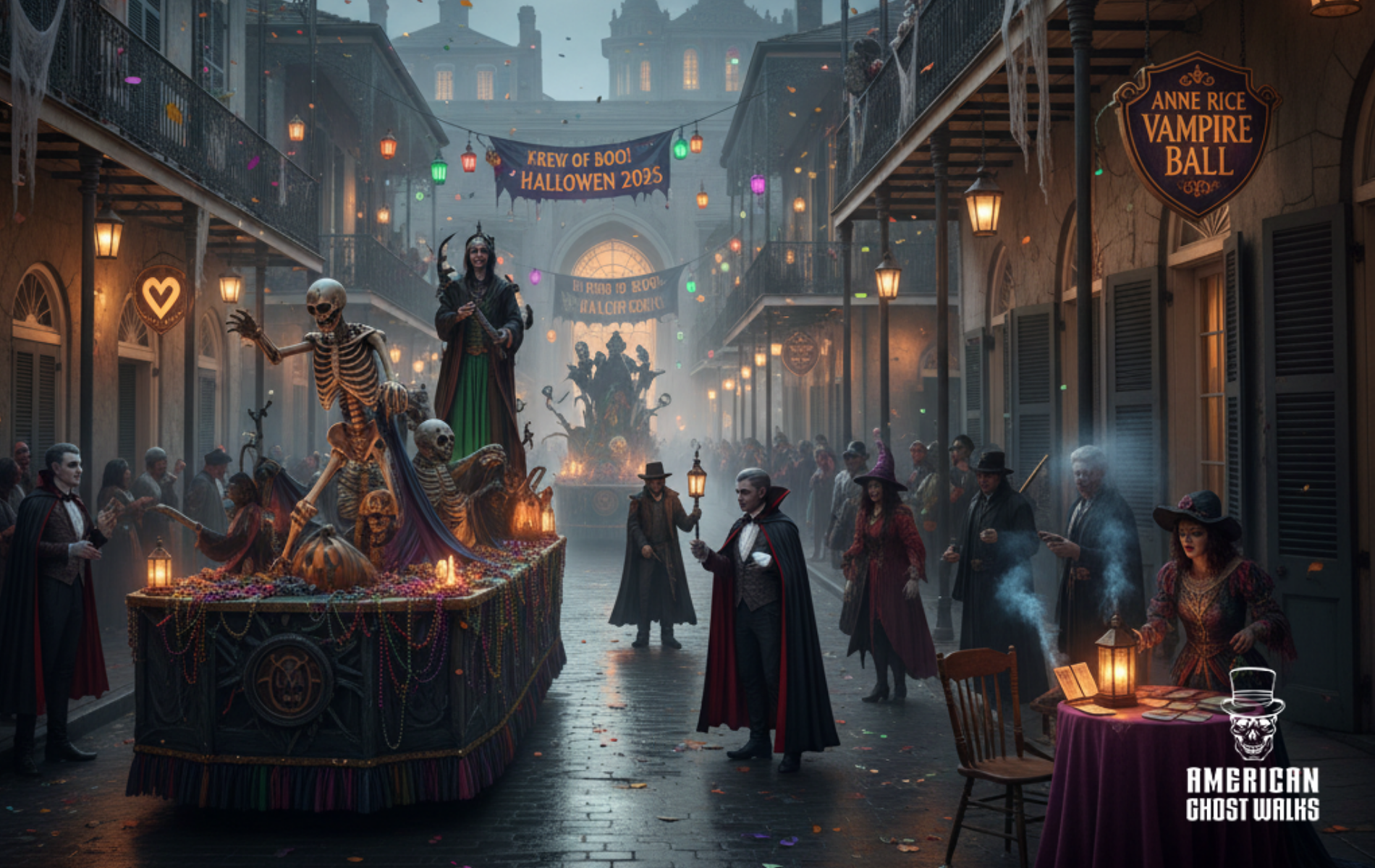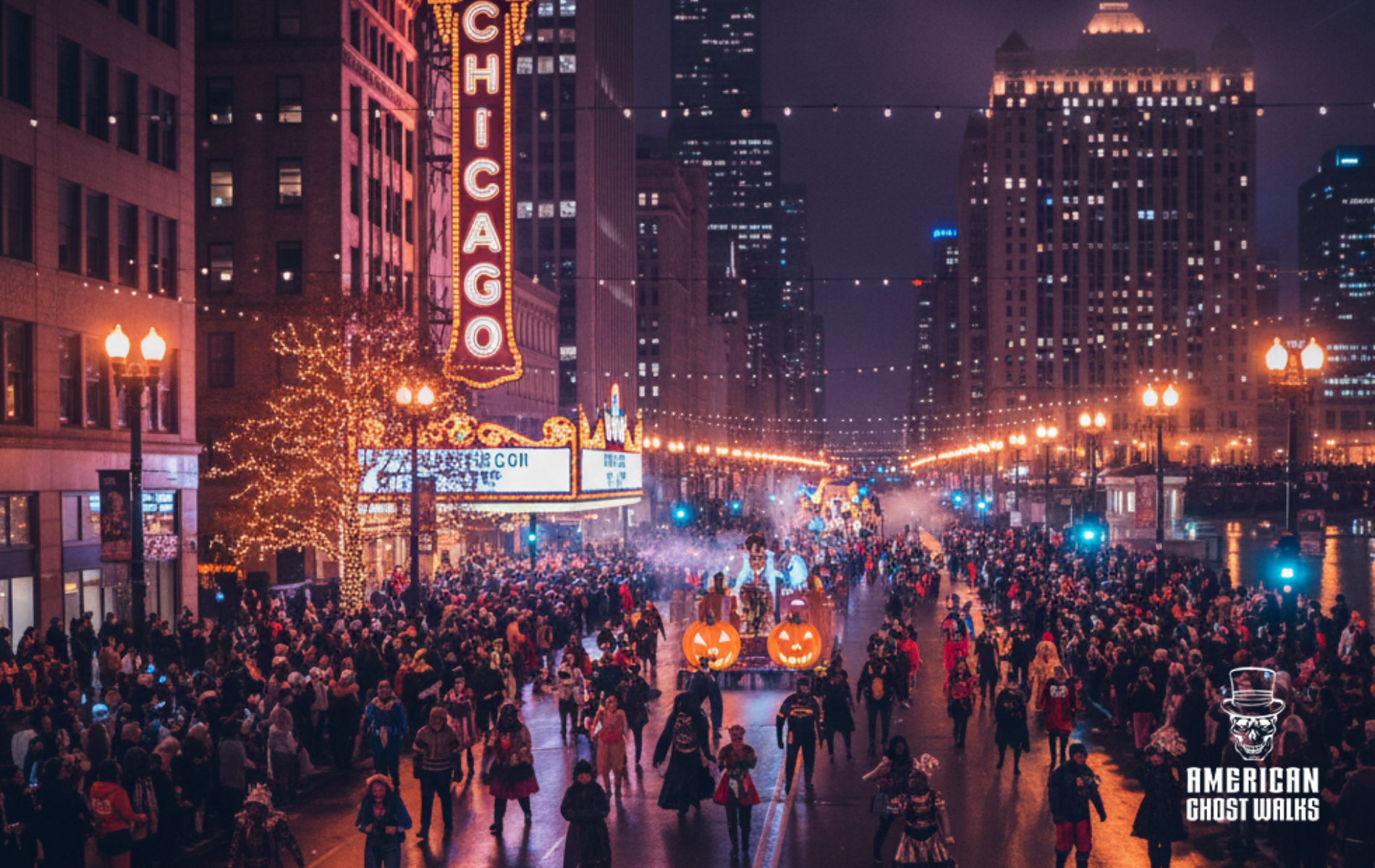Wild Nights: Ghosthunting Chicago's Lincoln Park Zoo
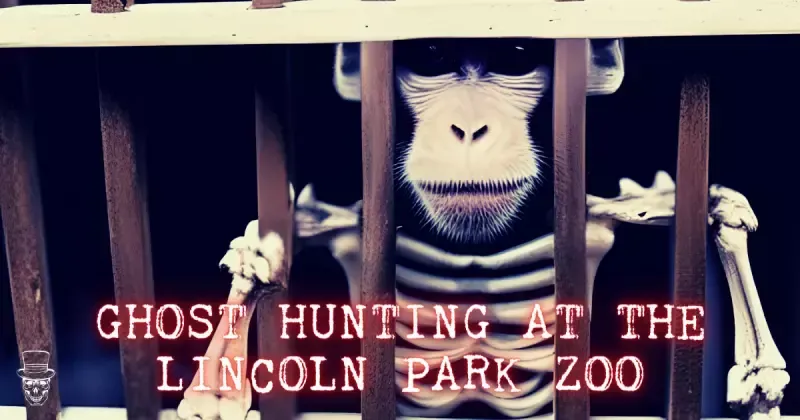
Night 1: The Lion House
As one of the oldest neighborhoods in Chicago, Lincoln Park is also, surely, one of the most haunted in the city. The home of George "Bugs" Moran, Lincoln Park saw some of the worst Gangland violence in American history, including the 1929 St. Valentine's Day Massacre. Occurring in a narrow brick garage at 2122 North Clark Street, the slaughter was part of a Chicago almost as blighted as today's city by turf wars, shootings and death.
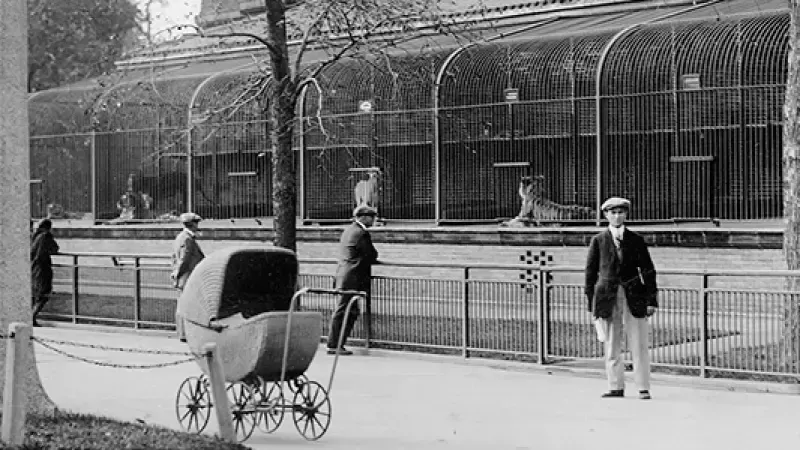
Lincoln Park also hosted one of the terrifying deaths which became known as the "Tylenol Murders." On October 1, 1982, flight attendant Paula Prince was found dead two days after buying a bottle of the cyanide-laced capsules at the Walgreen's store at North Avenue and Wells Street, in Lincoln Park's Old Town section.
Next door to the Second City was the infamously haunted restaurant called That Steak Joynt (now Adobo Grill), an old school eatery with one of the meanest ghosts in town, known to drag waitresses down the staircase and manifest as a pair of glowing eyes. Psychics and mediums claimed that a double murder had occurred in Piper's Alley, the cobblestoned pathway which once ran along the building, and that the killer, in phantom form, was still at large on the premises.
Adobo Grill denies any ghostly goings-on today. Paula Prince, one of the victims of the 1982 Tylenol Murders, lived in Old Town. That Steak Joynt (now Adobo Grill) was one of Chicago's most haunted places.Old Town is also home to St. Michael's Church, where the Devil himself is said to have appeared in the Communion line one Sunday night in the 1970s, cloaked in a black hood and robe, with hooves instead of feet.
And it's the stomping grounds of Candyman. The Cabrini Green housing project, now gone forever, was the reported lair of the hooked killer of urban legend--and Sandburg Village the home of the heroine who tangled with his menace.
Without a doubt, one of the most legendary of Lincoln Park's ghosts is that of the late John Dillinger, the swashbuckling bank robber who in 1934 wreaked havoc for months across three states before being gunned down in the alleyway just south of the Biograph Theater. They say you can sometimes still see his bluish form stumbling and falling on the pavement--or feel the icy chill of his spirit move through your own body there.
Despite these plentiful tales of the neighborhood, there is no part of Lincoln Park more haunted than the park itself, which was originally the home of Chicago's City Cemetery, a sprawling burying ground stretching from North Avenue to Armitage and from the old Green Bay Trail (Clark Street) to Lake Michigan. The cemetery was short lived. Established in 1843, a cholera scare caused residents to fear that the burial of victims would spread the disease to the nearby water supply.
Soon, the order was given for the disinterment and removal of the tens of thousands of corpses. The long process came to a shocking halt when, on the night of October 8, 1871, high winds blew flaming debris from a south side inferno across the river. The Great Chicago Fire, sweeping swiftly northward, pushed north side residents to flee into the cemetery grounds and, eventually, into the waters off North Avenue Beach.
The cemetery was almost completely destroyed in the Great Fire. "Headboards"--the wooden markers which designated most burials of the day--were reduced to ash by the conflagration, rendering plot after plot impossible to identify. With no way to discern where the myriad burials remained, the city simply continued its plans to create a lakefront park, and Chicago moved on. Apparently not all of the dead, however, did.
Artist and scholar Pamela Bannos, after years of painstaking research, determined that as many as 15,000 bodies may remain in Lincoln Park today, under the Zoo, the ball fields, the grounds of the Chicago History Museum and even the posh homes of the Gold Coast; land south of North Avenue was home to an Archdiocesan cemetery concurrent with City Cemetery's time here.
A cousin of mine, a retired sheet metal worker, years ago told me strange tales of the bones often found on the properties of the mansions of Astor Street, Dearborn Street and other blocks. The workers kept close the business card of a local shaman, who they would call to collect the bones and re-inter them, in hopes that their owners would not wander the Earth after the disruption of their graves.
Ghost hunters have long known of the haunting of these old cemetery grounds by the dead left behind after the Great Fire, but while several investigations have been done on the public grounds of Lincoln Park and in some of the private homes and businesses of the surrounding area, no investigation had ever been done of the Zoo, which spread from it original enclosure over a large acreage, including much of the former cemetery grounds.
When, then, the events manager called me in the spring of 2013 about creating a "ghost tour" of the Zoo for patrons as part of its public programming, I was beyond thrilled at the prospect, and we immediately set a date for an initial investigation night.
I knew exactly where I wanted to go on that first visit, because over many years I had been approached via letter, phone call and email about close encounters in, of all places, the women's restroom in the Lion House basement. Time after time, women would report having used the facility and, while washing their hands or applying makeup, seeing in the mirrors men and women dressed in Victorian clothing.
On the night of the first investigation that summer, myself and another investigator entered the restroom and were immediately struck by the layout of the room. Rows of sinks lined the two walls, parallel to each other. Above the sinks were rows of mirrors, creating an "infinity" effect from the two walls of mirrors facing each other.
Now, most paranormal investigators will concur that mirrors are one of those things--like salt or water--that have some definite power in the world of the preternatural.
Steeped in folklore, these items really do seem to have some importance in the realm of paranormal experience. One theory is that entities can be easily "trapped" in mirrors. Presumably, the spirits enter them to explore the objects they see reflected, but suddenly find themselves engulfed in blackness, on the other side of the mirror's glass--essentially inside the mirror.
This works the opposite way as well. My friend Colleen Nadas, a medium, likes to build and use a tool called "The Devil's Toybox," which is a kind of "ghost trap" comprised of a cube made of inward facing square mirrors, securely taped together at the seams. Investigators use contact microphones to record sounds from inside the box, believing that if a spirit attempts to investigate, it will find itself trapped because of the mirrors and start to make a fuss.
Sometimes this "fussing" leads to great electronic voice phenomena, or EVP: recordings of the voices of the angry or frightened ghosts or knocking sounds from inside the box. In the Zoo's Lion House, we instantly theorized that entities were routinely finding themselves stuck in these mirrors due to the effect created by the rows of mirrors facing each other.
EVPs
Anecdotes collected from the Zoo staff confirmed that staff members had also experienced encounters here, especially hearing a man's voice commanding, "Get out!" Amazingly, when I set up my laptop and began to record for EVP, within a minute I picked up a stern male voice warning, "Get out! There's a woman here!" A future visit by a medium confirmed that one of the male spirits had taken on the task of keeping men--dead and alive--out of the women's restroom.
As we continued our investigation, I took several series of photographs down the row of stalls leading to the end of the facility. During investigations, I like to take fifty to one hundred photos or more of each location to see if any of the frames contain an anomaly. When I played back the recording done during this time, I found that one of the male entities was a bit angry that I wasn't paying as much attention to him as the area I was photographing, because he clearly says, "Will you look at me!"
As is typical with most investigators, I asked if there was anything I could do for the entities who remained in this spot. The same voice, now with a tinge of sadness, answered, "Help me...with leaving." When I asked if there was anything the spirits wanted to tell us about their time on Earth, one can make out the sound of a lion's roar and of the same voice saying, "I miss it."
On a subsequent visit to the Lion House bathroom, I was amazed to find that I had photographed a shadowy figure silhouetted against one of the bathroom stalls. This photograph was one of a sequence of sixty I had snapped, one after another in quick sequence. Only this photo showed the image. The other investigators with me attempted to recreate the shadow by standing against the opposite wall, out of view, but could not.
On the first investigation night, after several hours of research and experiment, we decided to call it a night and began to disable and back up our equipment. I would say that, generally, when an investigator ends an investigation and says "Goodbye!" before turning off a recording device, the entities tend to scramble to say more, especially to give more pleas for help.
Not so in the case of this location. At least one of the entities was eager to see us go. In response to my invitation, "Is there anything else you'd like to say before we go?" the sound of--perhaps anxious--footfalls can be heard, along with the words, "Turn out the light. Good night!"
Night 2: The Primate House
My first exposure to primates as a child was at the old "Children's Zoo" at Chicago's Lincoln Park Zoo: a building next to the Sea Lion pool which focused on education for young children, where my dad would take me as part of our regular "rounds" about the city.
At the Children's Zoo we could watch baby chimps being bottle fed, learn about the varying plumage of birds, and even hold a snake or two. My dad, always the troublemaker, would horrify me by taking off his stocking hat and holding it through the bars of one of the walk-in cages where an active little white headed capuchin was housed. Invariably, the little guy would grab Dad's hat, and a keeper would eventually have to go in and coax it back.
Little did I know while I watched that tiny creature pulling on my dad's cap that Lincoln Park Zoo was one of the most important centers for primate research in the world. Named for a former Zoo director and world renowned ape researcher, today the Lester E. Fisher Center for the Study and Conservation of Apes brings together researchers and organizations from around the world.
Dr. Lester Fisher is a familiar name to native Chicagoans born between 1960 and 1975, as the good doctor was a popular fixture on WGN's beloved Ray Rayner Show: a morning news show for kids which featured news, weather and sports, comedy and musical sketches, arts and crafts and more. Animals were an important part of the show.
Children looked forward to the weekly visits from Chelveston, a white duck who lived at the Animal Kingdom pet shop on Milwaukee Avenue, as Rayner fed the duck and chased him around the studio, trying to get him to jump into a basin of water, which usually ended up with Rayner being much wetter than Chelveston.
Rayner also took occasional "field trips" to Lincoln Park Zoo, in a wonderful segment called The Ark in the Park.
During the segments the host would visit with Dr. Fisher, who would introduce viewers to one of the thousdands of breeds housed at the Zoo and talk about their habitats.
The Regenstein Center houses the finest collection of endangered apes in the world. Before it was built, the Zoo's apes were housed in the modern Great Ape House (completed in 1976), which today is office and meeting space, topped by an enchanting carousel featuring endangered species rather than horses. Previous to the erection of that facility, the great apes made the old primate house their home, which is today called the Helen Brach Primate House.
This structure was one of the original Zoo buildings but was remodeled in the 1990s to remove the cells and bars and recreate, instead, a two-story faux "jungle" of trees and water, fronted by thick glass and enhanced by an outdoor habitat for the warmer months. The Primate House today is home to monkeys, lemurs, gibbons and tamarins who mesmerize guests for hours with their antics. Perhaps my dad's capuchin is still there, in old age, waiting for the tall guy with the hat to come back. Perhaps not.
Until the opening of the Great Ape House in 1976, Dr. Fisher's office was housed in the Primate House as well. You can still see the door to it, on the left as you enter the beautiful arched entryway to the historic structure.

Though he was a famous and much-loved fixture at the Zoo, Dr. Fisher's popularity was eclipsed by another familiar of the Primate House: the world-renowned great ape known as Bushman, one of the most famous animals ever held in captivity. Often featured in newsreels, Bushman had been the pet of a Cameroon minister's daughter before being sold to the Zoo in 1930 for $3,500, or about $50,000 today.
The cuddly creature she'd called "my sweet little boy" as a child grew into a 550 pound hulk who drew millions of visitors during his tenure at Lincoln Park Zoo. His massive girth was a shuddering thing to behold. As one reporter observed, Bushman appeared "like a nightmare that escaped from darkness into daylight who has exchanged its insubstantial form for 550 pounds of solid flesh.
His face is one that might be expected to gloat through the troubled dreams that follow overindulgence. His hand is the kind of thing a sleeper sees reaching for him just before he wakes up screaming."
But Bushman's real appeal lay not in his ability to terrify, but to charm. Visitors stood for hours watching his antics, which included throwing food and dung at patrons with razor sharp precision. In the fall of 1950 Bushman escaped from his cage, meandering through the primate house for hours until a garter snake scared the giant back to his enclosure.
Earlier that year, an illness which threatened death had caused more than 100,000 visitors to pay their last respects. Bushman survived--briefly--and passed away the next winter, on New Year's Day 1951. His empty cage became a point of pilgrimage for weeks after his death.
His enormous frame was preserved by taxidermy and put on permanent display at Chicago's Field Museum of Natural History. In 2013, Winifred Hope, the girl who had loved Bushman like a baby brother during his earliest days in West Africa, visited the specimen in the spring of 2013 at the age of 92.
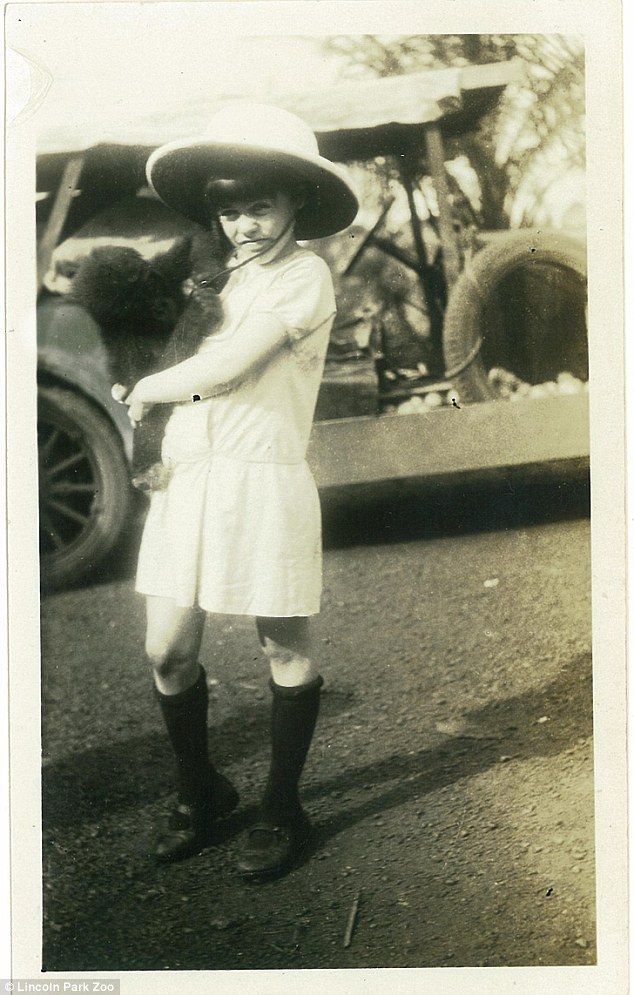
The emotional and important history of the Primate House made it a definite "to do" on our list of locations to investigate at Lincoln Park Zoo. I especially wanted to see if we could pick up any residual voices in Dr. Fisher's erstwhile office.
Dr. Fisher, of this writing, is very much alive; however, often we find that when someone is passionately tied to a location for many years, their voice, their smell, and even their physical form can leave a lasting impression which can sometimes be picked up by future generations. With his intense connection to the Zoo and to primate research here, would we find that Dr. Fisher, upon retirement, had left part of himself behind?
That first night we set up a laptop computer to record for EVP in Fisher's old office space. We left the laptop inside, closing the door and going on to investigate elsewhere. Since we were not trying to communicate with an intelligent entity but simply pick up residual sounds, there was no need for us to remain and ask questions, which is the usual method of collecting EVP from discarnate entities.
Disappointingly we did not pick up any voices from Fisher's office, but we did find that the laptop had mysteriously ended the recording and started two successive ones--a truly impossible feat with no one in the locked room to stop and start the recording button.
While the recording was going on, we went on to the larger Primate House to investigate. With us was Colleen Nadas, a medium who picked up numerous entities in the building, most of them the energies of children. Fascinatingly, several years later Dave Olson and his group, Chicago Paranormal Investigators, recorded what sounded like a little girl saying, "I want to go to the Lincoln Zoo." During the same investigation, Olson's group was able to record, with a thermal camera, anomalous moving forms along the floor of the corridor.
That same night, I had been recording hear the interior part of the entrance and went out into the vestibule to listen to the recording, hoping I'd picked something up. After a few minutes I shut off my laptop because I heard, coming from inside the building, a high pitched screaming which sounded like one of the lemurs shrieking at the top of its lungs. I had several teams with me that night as my guests and thought one of the members was agitating the animals.
After several minutes of this relentless screaming, I went to tell the culprit to stop annoying the creature so we wouldn't be asked to leave. As soon as I opened the interior door, the shrieking stopped. To my amazement, I found upon inquiring of the various investigators that not one person had heard the hair curling sounds or picked them up on their recording devices.
EVPs
Later that evening, I sat on the floor against the wall, recording with my laptop and softly asking questions of any entities which might be present. Asking, "How many are here?" I received the answer, "Many. Like meeeeeee....." And, "We're all here." I then asked, "Are you an animal or a keeper?" In response, a male voice with an Australian accent responded, "Who cares?" When I asked if there were any animals or humans from another country, a voice responded, "I've been so many places." This particular clip is an example of an entity using an investigator's voice to create words, as this voice sounds like mine, but of course with the unnatural rhythm so common to EVP.
Very interestingly, another voice mentioned Julie, the events manager who was with us that night. We had all been very, very busy that spring but Julie was eager to set up another investigation so that we could add more material to the Zoo ghost tour that fall. Thanks to her efforts, we finally got everyone together on schedule to come out for an investigation. The entities in the Primate House evidently knew it had been hard to coordinate, because when I asked, "Are you glad we are here?" A voice says, "I love it. Julie caught you."
Of course, in all of the locations investigated, there was the possibility that entities were attached to the bodies who had been interred at the City Cemetery which formerly stood here. During one investigation, Dave Olson and the Chicago Paranormal Investigators asked, "Are you part of the cemetery that was here?" A male voice answered, "Yes, I was." The team also picked up another, higher, possibly child's voice, which says, "He's talking over us."
Dive deeper into the mysterious world of hauntings with our curated collection of paranormal investigations and ghostly encounters. Read more stories like this in
“Ghosts of Lincoln Park: A Chicago Hauntings Companion” by Ursula Bielski, a book of downtown Chicago ghost stories written by our own American Ghost Walks team.
Click here for more.
Dive deeper into the mysterious world of hauntings with our curated collection of paranormal investigations and ghostly encounters. Read more stories like this in “The Original Chicago Hauntings Companion” by Ursula Bielski, a book of Chicago ghost stories written by our own American Ghost Walks team. Click here for more.
Are you fascinated by the supernatural and craving more spine-tingling tales? Whether you're a skeptic seeking evidence or a believer looking for your next supernatural fix; "American Ghost Books" offers everything from historical haunted locations to firsthand accounts of paranormal experiences.
Each book has been carefully selected to provide authentic, well-researched stories that will keep you turning pages well into the night. Don't let your curiosity about the supernatural remain unsatisfied – explore our collection and find your next ghostly adventure today!

